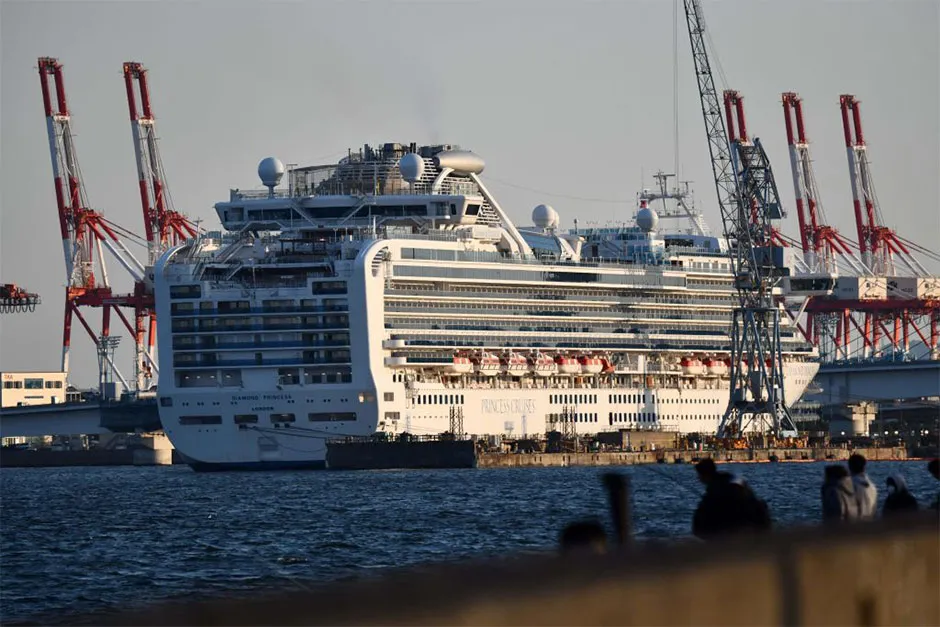Coronavirus infection without symptoms might be more common than previously thought, according to a study of people isolated on a cruise ship during the pandemic.
More than 80 per cent of the passengers and crew on the unnamed cruise ship who tested positive for COVID-19 were asymptomatic.The prevalence of the virus on affected cruise ships is therefore likely to be “significantly underestimated”, the study published in the journal Thorax concludes.
“Strategies are needed to assess and monitor all passengers to prevent community transmission after disembarkation,” the Australia-based researchers said.
Read more coronavirus news:
- Far-UVC light could be used against coronavirus without harming people
- Coronavirus in saliva could travel more than 5m in a 'slight breeze'
Professor Alan Smyth, joint editor in chief of the journal, said the study’s results could have implications for the easing of lockdown restrictions if more people than previously thought have already had the virus.
Of the 217 passengers and crew on board, 128 tested positive for the virus and of those, 104 patients – 81 per cent – did not have symptoms.
The ship left in mid-March from Argentina for a planned 21-day cruise of the Antarctic, along a similar route taken by explorer Sir Ernest Shackleton in the early 1900s.It set sail after the global pandemic was declared by the World Health Organisation (WHO) and two of the study authors happened to be passengers, while a third was the expedition physician.
Passengers and crew were screened for COVID-19 symptoms, body temperatures were taken before boarding, and no-one who had recently travelled through countries with high infection rates at the time such as China and South Korea was allowed on.

The first recorded fever on board the ship was on day eight and the study authors said from that point all passengers were confined to their cabins and surgical masks were issued, while full personal protective equipment was used for any contact with any patients with a fever.Eight people had to be medically evacuated from the ship and the authors said there had been one death to date.
The Uruguayan government and Ministry of Health provided a “sanitary corridor” for the repatriation of 112 Australian and New Zealand passengers on day 28 and for all other passengers on day 32.
Researchers from the faculty of medicine and health sciences at Macquarie University, the oncology trials unit at Sunshine Coast University Hospital and the Royal Australian College of General Practitioners believe their study to be the first instance of complete COVID-19 testing of all passengers and crew on an isolated cruise ship during the current pandemic.
Read more about COVID-19:
- Coronavirus vaccine: The race to create a cure for COVID-19
- Coronavirus treatments: five alternatives to vaccines
Prof Smyth said the study could have wider implications.He said: “It is difficult to find a reliable estimate of the number of COVID-positive patients who have no symptoms.
“In early March, WHO suggested the figure might be only 1 per cent, very different from the 81 per cent figure found on the cruise ship. As countries progress out of lockdown, a high proportion of infected but asymptomatic individuals may mean that a much higher percentage of the population than expected may have been infected with COVID.
“These individuals may have immunity to COVID. This demonstrates the urgent need for accurate seroprevalence studies to estimate the overall population infection rate across the globe.”
It remains unclear what level of immunity people develop once they have had COVID-19.
What is the R number, and why is it relevant to coronavirus?
The reproduction number – often called the R value or R number – is a measure of a disease’s ability to spread. It tells us how many people a single infected person will pass on the disease to.
The R number for COVID-19 that’s being quoted in the media and government briefings is what’s known as the ‘effective’ reproduction number. This value can go up and down.
We can reduce R by making it harder for the disease to spread, by implementing measures such as social distancing, closing restaurants and non-essential shops, and encouraging people to stay at home.
Every disease also has what’s called a ‘basic’ reproduction number, R0, which is the fixed value of R if no measures are put in place. For example, measles is highly contagious, with a R0 as high as 18, while COVID-19 has a R0 of around three.
So if COVID-19 was allowed to spread through the population, an infected person would, on average, give the disease to three other people.
But if all these people are practising physical distancing, then the virus can’t spread so easily and the effective R value goes down.
The crucial thing is to keep R below 1. If we can do this, then the number of new cases dwindles and the outbreak will eventually come to a halt.
Conversely, if R rises above 1, then we run the risk of rapidly escalating case numbers that would require stronger measures to keep the virus under control.
Because of this, R is used by governments to assess how we are doing in our efforts to stop the spread of COVID-19, and to adjust our actions, if needed.
Read more:
